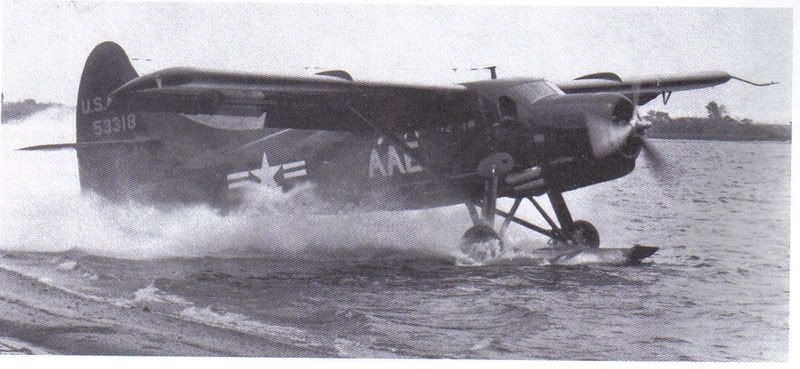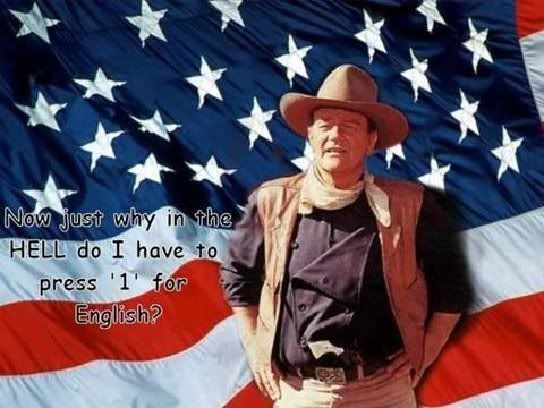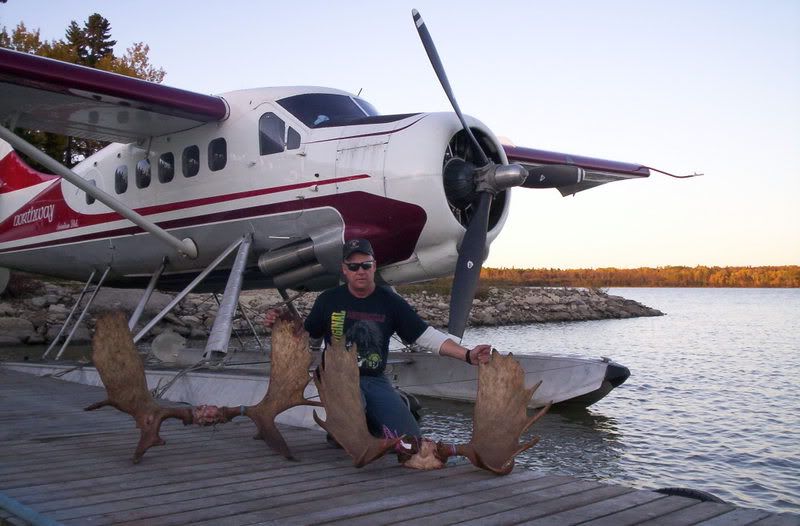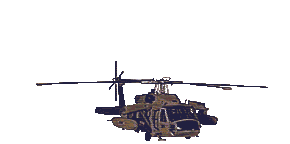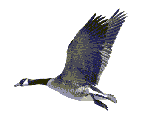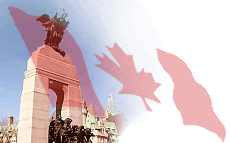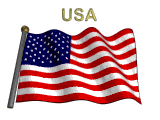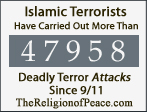Wednesday, January 24, 2007
Canadian Warplane Heritage Museum "Residents".....

The Canadian Warplane Heritage Museum (CHWM) is a non-profit organization whose purpose is to acquire, preserve, document, maintain, and "share history" of a fleet of aircraft that were operated and flown by the Canadian Military from the beginning of World War II to the present day. The Museum is located at 9280 Airport Road, Mount Hope, at the Hamilton International Airport, Ontario, and is open year-round from 9 AM to 5 PM, except Christmas and New Years' Days.
Every year the CWHM produces a calendar, with her "residents" modeling for the photo shoot, and every year the Canadian Owners and Pilots Association (COPA) sends out the CWHM calendar with "COPA Flight" towards the end of the year. Being a COPA member for many years, I always receive the calendar, and anxiously anticipate it's arrival. So, I would now like to share the photos from it with you, in case you haven't seen them. They are fantastic photos of fantastic specimens.
MISS JANUARY
 North American T-28 "Trojan". The "Trojan" was designed to replace the T-6 "Texan"s as a trainer for the U.S. Navy and Air Force. Over 15 different nations operated the Trojan, and 1,948 were built between 1950 and 1957.
North American T-28 "Trojan". The "Trojan" was designed to replace the T-6 "Texan"s as a trainer for the U.S. Navy and Air Force. Over 15 different nations operated the Trojan, and 1,948 were built between 1950 and 1957.MISS FEBRUARY
 The Fleet Fort Model 60K was the only aircraft designed and built by Canadians in World War II. The rest of the aeroplanes produced in this country were constructed under license. The Fort was also the first all-metal monoplane built by Fleet Aircraft of Canada (Fort Erie); and it was intended as a cheaper version of the Harvard, also an intermediate trainer. The Fort's maiden flight occurred in 1940, and the RCAF took an additional 100 on strength in 1941.
The Fleet Fort Model 60K was the only aircraft designed and built by Canadians in World War II. The rest of the aeroplanes produced in this country were constructed under license. The Fort was also the first all-metal monoplane built by Fleet Aircraft of Canada (Fort Erie); and it was intended as a cheaper version of the Harvard, also an intermediate trainer. The Fort's maiden flight occurred in 1940, and the RCAF took an additional 100 on strength in 1941.Initially, the RCAF did not want to order the Model 60K, and their doubts proved valid. The Fort was relatively easy for pilot trainees to master, thereby making it unsuitable for transition to combat aircraft (e.g., Hawker Hurricane). Also, the RCAF decided that pilots who had soloed in Finches and Tiger Moths could proceed to Harvards without training on Forts. The Forts were then used to train wireless operators until the last Model 60K was retired in 1946.
The CWH Fort was the prototype that was employed by the National Research Council Test and Development Establishment until it was assigned to 2 Wireless School in 1942. The Museum acquired this aircraft in 1979. The following year, Fleet Aerospace, having just rebuilt the Cornell, volunteered to return the Fort to airworthy status. It is the only example of this type, world-wide, to still fly.
MISS MARCH
 Probably the most famous Allied bomber of World War II, the Lancaster had impressive flying characteristics and operational performance. The Lancaster was the RAF's only heavy bomber capable of carrying the 12,000-lb Tallboy and 22,000-lb Grand Slam bombs. The aircraft demonstrated superbly its right to fame with the daring and precise raids on the Ruhr dams in May 1943, and also the sinking of the German battleship Tirpitz in November 1944.
Probably the most famous Allied bomber of World War II, the Lancaster had impressive flying characteristics and operational performance. The Lancaster was the RAF's only heavy bomber capable of carrying the 12,000-lb Tallboy and 22,000-lb Grand Slam bombs. The aircraft demonstrated superbly its right to fame with the daring and precise raids on the Ruhr dams in May 1943, and also the sinking of the German battleship Tirpitz in November 1944.Thousands of Canadian aircrew and other personnel served with the RCAF and RAF's Lancaster squadrons in England; and thousands of Canadians at home worked at Victory Aircraft in Malton (Toronto), Ontario, where they produced over 400 Lancaster Mk X's. In total, more than 7300 Lancasters rolled off the production lines in Britain and Canada. Only two still fly.
The CWH Museum has dedicated its Mynarski Memorial Lancaster to the memory of Pilot Officer Andrew Charles Mynarski, VC, of 419 (Moose) Squadron, 6 (RCAF) Group. Mynarski won 6 Group's only Victoria Cross, the Commonwealth's highest award for gallantry in battle. On the night of 12/13 June 1944, his Lancaster X was shot down by a Luftwafffe night fighter. As the bomber plunged earthwards, Mynarski, his flying clothing afire, tried in vain to free his trapped rear gunner from the jammed rear turret. Miraculously, the gunner lived to relate the story of Mynarski's bravery. Unfortunately, Mynarski died from his severe burns.
MISS APRIL
 The Firefly served as a carrier-borne reconnaissance fighter in both World War II and the Korean War. Fairey Aviation (Britain) Company's original prototype first flew in 1941 and, two years later, the aircraft became operational with the Royal Navy Fleet Air Arm. In total, 1623 Fireflies left the assembly lines. One of the aeroplane's most interesting features is the housing of the pilot and navigator/weapons officer in separate compartments. In addition, the innovative wing flaps, when extended, increased both the wing area and, in turn, their lift. This last feature made the heavy Firefly docile during landings on aircraft carrier decks.
The Firefly served as a carrier-borne reconnaissance fighter in both World War II and the Korean War. Fairey Aviation (Britain) Company's original prototype first flew in 1941 and, two years later, the aircraft became operational with the Royal Navy Fleet Air Arm. In total, 1623 Fireflies left the assembly lines. One of the aeroplane's most interesting features is the housing of the pilot and navigator/weapons officer in separate compartments. In addition, the innovative wing flaps, when extended, increased both the wing area and, in turn, their lift. This last feature made the heavy Firefly docile during landings on aircraft carrier decks.The Royal Canadian Navy employed 65 Fireflies of the Mk AS-5 variety on board its own aircraft carriers between 1946 and 1954. The letters 'AS' stand for anti-submarine, which was the intended primary role of the RCN's Fireflies.
The Museum's Mk 5 was the first aeroplane type acquired for CWH's collection, which explains why the Firefly is pictured on the CWH decals and letterhead. The Camden Air Museum (Australia) provided the Museum with the Firefly, which has been restored in the colours and markings of 825 (RCN) Squadron, which flew Mk 5's from the aircraft carrier HMCS 'Magnificent,' circa 1953.
MISS MAY
 The Boeing Stearman was manufactured as an initial training aeroplane by Boeing Aircraft Company (Witchita Division), which eventually constructed at least 8500 Stearmans, or more than 10,300 if one includes spare parts. No other biplane was ever built in this quantity. Beginning in 1934, the Americans sold the Stearman for export as the 'Kaydet.'
The Boeing Stearman was manufactured as an initial training aeroplane by Boeing Aircraft Company (Witchita Division), which eventually constructed at least 8500 Stearmans, or more than 10,300 if one includes spare parts. No other biplane was ever built in this quantity. Beginning in 1934, the Americans sold the Stearman for export as the 'Kaydet.'The RCAF's 300 Model PT-27's were ordered with special modifications for air training, particularly in Canada's winter weather conditions. The PT-27 required navigation lights, an enclosed, heated cockpit and a blind-flying hood; however, only one Stearman arrived with the enclosed cockpit. After four months of active service with the BCATP, the PT-27s were traded to the US for Fairchild Cornells because of the unsuitability of the open cockpit for winter training.
The CWH aircraft was built in 1942 and is a Model PT-17, which was donated to the collection in 1986. The Stearman is painted in the training colours and markings of a BCATP Elementary Flying Training School (EFTS). Although this aeroplane is a PT-17, the serial number FK107 was chosen to represent the last of the open-cockpit PT-27s supplied to the BCATP.
MISS JUNE
 In the 1930s A.V. Roe Company (Britain) built the Avro Anson as a reconnaissance airplane for the RAF. The aircraft began its military service in 1936, becoming the RAF's first monoplane. By 1939 it was already obsolete, and the Lockheed Hudson superceded the Anson in the reconnaissance role. More than 11,000 Ansons were built.
In the 1930s A.V. Roe Company (Britain) built the Avro Anson as a reconnaissance airplane for the RAF. The aircraft began its military service in 1936, becoming the RAF's first monoplane. By 1939 it was already obsolete, and the Lockheed Hudson superceded the Anson in the reconnaissance role. More than 11,000 Ansons were built.In Canada the Anson is best known for its employment in the BCATP as a multi-engined trainer. It quickly became the mainstay of the Air Training Plan that graduated many of the pilots who would fly multi-engined aircraft for the RCAF and RAF. Ansons rendered excellent service to the RCAF until the last one left active service in 1954.
The CWH Anson Mk V-P is a long-range, photographic reconnaissance version. It is an all-wooden aircraft, made in 1944 by MacDonald Brothers Aircraft, Winnipeg, Manitoba. It was donated in 1980, after being used in post-war era for conducting mineral surveys. It now bears the yellow colour of the BCATP's trainers and markings of the wartime RCAF.
MISS JULY
 The Harvard, named after the university, was produced as an export version of the AT-6 Texan advanced trainer. It became the standard advanced trainer for the BCATP in Canada and the RAF in Britain. It was used to train thousands of Commonwealth pilots for combat flying in fighters and fighter-bombers.
The Harvard, named after the university, was produced as an export version of the AT-6 Texan advanced trainer. It became the standard advanced trainer for the BCATP in Canada and the RAF in Britain. It was used to train thousands of Commonwealth pilots for combat flying in fighters and fighter-bombers.The Harvard was well suited to its training role, as it had enough bad habits to teach inexperienced pilots to respect their future, high-performance fighters. The RCAF kept the Harvard on strength as a trainer until 1966. The distinctive snarl of the Harvard has long been a familiar sound in Canadian skies and is produced by its propeller tips approaching sonic speeds when in fine pitch at high revolutions per minute (rpms).
The CWH Harvard was built as a Mark IV variant by Canadian Car and Foundry in November 1951. It saw service at Centralia and Trenton training schools until 1965, when it was sold to the civilian market as surplus.
MISS AUGUST
 The B-25 Mitchell was built by North American Aviation Company in California. Various models were flown in every theatre of war and on missions ranging from bombing, to low-level tank busting and anti-shipping attacks. In the Battle of the Bismarck Sea (Pacific theatre), modified Mitchells with ten forward-firing guns achieved great success against Japanese naval forces. Another historic event was the Doolittle Raid, the Americans' first bombing operation against Japan, which was launched at long-range from the deck of the aircraft carrier USS 'Hornet.'
The B-25 Mitchell was built by North American Aviation Company in California. Various models were flown in every theatre of war and on missions ranging from bombing, to low-level tank busting and anti-shipping attacks. In the Battle of the Bismarck Sea (Pacific theatre), modified Mitchells with ten forward-firing guns achieved great success against Japanese naval forces. Another historic event was the Doolittle Raid, the Americans' first bombing operation against Japan, which was launched at long-range from the deck of the aircraft carrier USS 'Hornet.'The RAF used Mitchells throughout the European and North African campaigns, where many of these aircraft were flown by Canadian crews. After the war, the RCAF operated Mitchells in Canada as navigational trainers until 1963.
The Museum's Mitchell 3 is a B-25 Model J that was manufactured for the post-war. It has been restored to the configuration of an aircraft from 98 Squadron RAF and is also dedicated to the Canadian members of that squadron and all the members of CWH who were awarded the Distinguished Flying Cross.
MISS SEPTEMBER
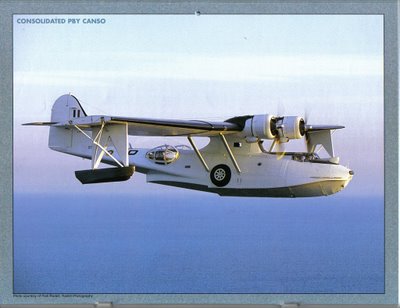 Consolidated's first PBY flying-boat prototype made its maiden flight in 1933. Overall, there were 3431 PBY's, of which 2029 were flying boats (e.g., PBY-5 Catalina) and 1402 were amphibians (e.g., PBY-5A Canso). More Consolidated PBYs were manufactured than any other type of flying boat or amphibian.
Consolidated's first PBY flying-boat prototype made its maiden flight in 1933. Overall, there were 3431 PBY's, of which 2029 were flying boats (e.g., PBY-5 Catalina) and 1402 were amphibians (e.g., PBY-5A Canso). More Consolidated PBYs were manufactured than any other type of flying boat or amphibian.The RCAF chose the PBY-5A in 1939 as its replacement for the Supermarine Stranraer. During World War II, Boeing Aircraft of Canada, Canadian Vickers and Canadair Ltd. made almost 800 PBY's in this country. The RCAF called its version the 'Canso A' - A for amphibious.
Canadian Vickers manufactured CWH's PBY-5A in 1944. It served with the RCAF until 1961 when it was sold as surplus. The Canso is restored in the colours and markings of 162 (Bomber Reconnaissance) Squadron and dedicated to the memory of Flight Lieutenant David Hornell, VC, who was awarded a posthumous Victoria Cross. On 24 June 1944 he and his crew bombed and sank U-1225. Sadly, the Germans shot down the Canso A, and Hornell and his crew spent more than twenty hours afloat on the ocean before being rescued. Hornell died shortly afterward. Acquisition in 1995 of the CWH Canso was made possible by generous donations from Canadian Resident Abroad Inc. and the Beamish Family.
MISS OCTOBER
 In 1937 Beech Aircraft of Wichita, Kansas, produced the Model 18 as a civil transport. The military needs of the Allied Air Forces and the Model 18's continuing popularity stretched the production period over 32 years. During this time, more than 9100 airplanes in 32 variants were built. A key reason for this aircraft's excellent reputation was its versatility. The Model 18 was also known as the 'Exploder,' 'Bug Smasher' and 'Wichita Wobbler.'
In 1937 Beech Aircraft of Wichita, Kansas, produced the Model 18 as a civil transport. The military needs of the Allied Air Forces and the Model 18's continuing popularity stretched the production period over 32 years. During this time, more than 9100 airplanes in 32 variants were built. A key reason for this aircraft's excellent reputation was its versatility. The Model 18 was also known as the 'Exploder,' 'Bug Smasher' and 'Wichita Wobbler.'The Canadians and British called the Beech 18 the C-45 Expeditor. It had many roles such as bombing and weapons training, search and rescue, light transport, photographic reconnaissance and communications. The RCAF received its first Expeditors in 1939 and flew them until the Services were unified in 1968. Retirement from the Canadian Forces came in 1970.
CWH obtained this airplane from a private donor in 1982 after it had flown for many years on commercial and private ventures around the world. Manufactured as a Model D18-C in 1942, this Expeditor was converted to a Model E18-S in 1946, when Pratt & Whitney engines replaced the original Continentals. The paint scheme and markings are of a photographic section of the RCAF circa 1944, which was based at Winnipeg and attached to 403 Squadron.
MISS NOVEMBER
 Douglas Aircraft Company built the first DC-3 civil transport aeroplane in 1935. Under its military designation of C-47, the Dakota became the most versatile and widely-used transport aircraft of this century. Its most crucial roles in World War II included cargo and personnel delivery, glider towing and paratroop drops. Douglas built more than 10,000 "Gooney Birds," as the Dakotas are affectionately known. Even the Soviets manufactured more than 2,000 and the Japanese 500 under license. As late as 1990 there were 3,500 Dakotas still flying world wide.
Douglas Aircraft Company built the first DC-3 civil transport aeroplane in 1935. Under its military designation of C-47, the Dakota became the most versatile and widely-used transport aircraft of this century. Its most crucial roles in World War II included cargo and personnel delivery, glider towing and paratroop drops. Douglas built more than 10,000 "Gooney Birds," as the Dakotas are affectionately known. Even the Soviets manufactured more than 2,000 and the Japanese 500 under license. As late as 1990 there were 3,500 Dakotas still flying world wide.In World War II the RCAF had three Dakota squadrons. In 1944, 437 was created in England and served in Northwest Europe; in that same year, 435 and 436 Squadrons were formed in India for service with the British XIV Army in Burma. Between 1943 and 1989, almost one-half of a century, the RCAF and Canadian Forces (CF) Air Command employed 169 Dakotas.
CWH's Dakota proudly wears the colours of 436 Squadron, whose slogan was "Canucks Unlimited." This aeroplane (C-GDAK) was built in June 1939 and, in 1990, was the C-47 with the second highest total of airtime of all operational Dakotas logging over 82,000 hours of air time and 12 million miles. The Museum's Gooney Bird is still being used to deploy parachutists -- but only at air shows. The Museum obtained its Dakota in 1981.
MISS DECEMBER
 This aircraft (RCAF NO. 2361) was manufactured in 1942 by National Steel Car Company at Malton (Toronto) under license from Westland Aircraft Corporation, England. World-wide, 1660 models were built, 225 in Canada. The STOL (short take off and landing) design uses an elaborate system of leading-edge Handley Page slats and large flaps enabled the aircraft to use unprepared landing strips in battlefield conditions. Under certain conditions as little as 165 yards was all the take-off distance required.
This aircraft (RCAF NO. 2361) was manufactured in 1942 by National Steel Car Company at Malton (Toronto) under license from Westland Aircraft Corporation, England. World-wide, 1660 models were built, 225 in Canada. The STOL (short take off and landing) design uses an elaborate system of leading-edge Handley Page slats and large flaps enabled the aircraft to use unprepared landing strips in battlefield conditions. Under certain conditions as little as 165 yards was all the take-off distance required.In Canada, Lysander aircraft were chiefly used for target towing at training schools, limited navigational training, communications duty, search and rescue operations. During WWII it was most noted for its use to transport operatives into occupied Europe, often returning with escapees including Allied aircrew. The "Lizzie" as named by aircrew, also boasted a Browning 0.303 machine gun housed in each wheel spat. Twelve small bombs could also be carried under sub-wings fitted to the wheel spats.
This aircraft was discovered in Western Canada. The restoration project was started by the Friends of CWH in Niagara Falls, NY in 1983. In 1997, the aircraft was returned to CWH where volunteers continue to restore the aircraft to flying condition. The camouflage paint scheme represents an aircraft of No. 400 Squadron "City of Toronto".
(except for the T-28 "Trojan", all aircraft descriptions are from the CWHM website.)
----------------------------------------------------------
As you can see, a "fine bevy" of "pin-up girls". The CWHM is a fantastic place to visit "online", and I am sure the experience increases "exponentially" once one visits in person. Thanks for all their dedication and hard work applied towards remembering, and keeping Canadian history alive.
***TOUR THE - Canadian Warplane Heritage Museum
WEBSITE - Canadian Warplane Heritage Museum
WEBSITE - Canadian Owners and Pilots Association
READ THE - Andrew Mynarski Story (fine Manitoba boy!)


